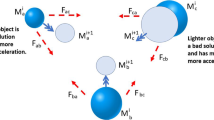Abstract
Customers are of great importance to E-commerce in intense competition. It is known that twenty percent customers produce eighty percent profiles. Thus, how to find these customers is very critical. Customer lifetime value (CLV) is presented to evaluate customers in terms of recency, frequency and monetary (RFM) variables. A novel model is proposed to analyze customers purchase data and RFM variables based on ordered weighting averaging (OWA) and K-Means cluster algorithm. OWA is employed to determine the weights of RFM variables in evaluating customer lifetime value or loyalty. K-Means algorithm is used to cluster customers according to RFM values. Churn customers could be found out by comparing RFM values of every cluster group with average RFM. Questionnaire is conducted to investigate which reasons cause customers dissatisfaction. Rank these reasons to help E-commerce improve services. The experimental results have demonstrated that the model is effective and reasonable.
Similar content being viewed by others
References
Burez J and Poel D V D, CRM at a pay-TV company: Using analytical model to reduce customer attrition by targeted marketing for subscription services, Expert Systems with Applications, 2007, 32(2): 277–288.
Burez J and Poel D V D, Separating financial from commercial customer churn: A modeling step towards resolving the conflict between the sales and credit department, Expert Systems with Applications, 2008, 35(1–2): 497–514.
Glady N, Baesens B, and Croux C, Interfaces with other disciplines modeling churn using customer lifetime value, European Journal of Operational Research, 2009, 197(1): 402–411.
Liou J J H, A novel decision rules approach for customer relationship management of the airline market, Expert Systems with Applications, 2009, 36(3): 4374–4381.
Pendharkar P C, Genetic algorithm based neural network approaches for predicting churn in cellular wireless network services, Expert Systems with Applications, 2009, 36(3): 6714–6720.
Pelaez J I and Dona J M, Majority additive-ordered weighting averaging: A new neat ordered weighting averaging operator based on the majority process, International Journal of Intelligent Systems, 2003, 18: 469–481.
Hosseini S M S, Maleki A, and Gholamian M R, Cluster analysis using data mining approach to develop CRM methodology to assess the customer loyalty, Expert Systems with Applications, 2010, 37(7): 5259–5264.
Gefen D and Ridings M C, Implementation team responsiveness and user evaluation of customer relationship management: A quasi-experimental design study of social exchange theory, J. Manage. Inf. Syst., 2002, 19(1): 47–70.
Ngai E, Customer relationship management research (1992–2002), Mark. Intell. Plann., 2005, 23(6): 582–605.
Ling R and Yen D, Customer relationship management: An analysis framework and implementation strategies, J. Comput. Inf. Syst., 2001, 41(3): 82–97.
Xu Y, Yen D, Lin B, et al., Adopting customer relationship management technology, Ind. Manage. Data. Syst., 2002, 102(8/9): 442–452.
Anton J and Hoeck M, E-Business Customer Service, Santa Monica, CA, The Anton Press, 2002.
Gartner Group, Report highlight for market trends: CRM services, Asia/Pacific, 2006–2007.
Sugumaran V, An agent-based knowledge management framework for the E-commerce environment, J. Comput. Inf. Syst., 2002, 42(5): 63–73.
Hughes A M, Strategic Database Marketing, Chicago, Probus Publishing Company, 1994.
Lo C F, Wu H H, and Chang E C, et al., Applying data mining to an outfitter’s customer loyalty, and value analysis, Journal of Quality, 2008, 15: 293–303.
Chen Y L, Kuo M H, Wu S Y, et al., Discovering recency, frequency, and monetary (RFM) sequential patterns from customers’ purchasing data, Electronic Commerce Research and Applications, 2009, 8: 241–251.
Yeh C, Yang K J, and Ting T M, Knowledge discovery on RFM model using Bernoulli sequence, Expert Systems with Applications, 2009, 36: 5866–5871.
Su B C, Lin S J, and Lee C C, Using RFM, Bayesian stochastic model and ARIMA for customer state forecasting, Journal of E-Business, 2006, 8(2): 193–218.
Yang H E, Wu C C, and Wang K C, An empirical analysis of online game service satisfaction and loyalty, Expert Systems with Applications, 2009, 36(2): 1816–1825.
Devaraj S, Fan M, and Kohli R, Antecedents of B2C channel satisfaction and preference: Validating E-commerce metrics, Information Systems Research, 2002, 13(3): 316–333.
Yager R R, On ordered weighted averaging aggregation in multicriteria decision making, IEEE Transactions on Systems, Man and Cybernetics, 1988, 18: 183–190.
Yager R R, Families of OWA operators, Fuzzy Sets and Systems, 1993, 59: 125–148.
Yager R R, Quantifier guided aggregation using OWA operators, International Journal of Intelligent Systems, 1996, 11: 49–73.
Wang Y M, Luo Y, and Liu X W, Two new models for determining OWA operator weights, Computers & Industrial Engineering, 2007, 52(2): 203–209.
Sadiq R and Tesfamariam S, Probability density functions based weights for ordered weighted averaging (OWA) operators: An example of water quality indices, European Journal of Operational Research, 2007, 182: 1350–1368.
Wang Y M and Parkan C, A mini-max disparity approach for obtaining OWA operator weights, Information Sciences, 2005, 175: 20–29.
Fulle’r R and Majlender P, On obtaining minimal variability OWA operator weights, Fuzzy Sets and Systems, 2003, 136: 203–215.
Redmond S and Heneghan C, A method for initialising the K-means clustering algorithm using KD-trees, Pattern Recognition Letters, 2007, 28(8): 965–973.
Kalyani S and Swarup K S, Particle swarm optimization based K-means clustering approach for security assessment in power systems, Expert Systems with Applications, 2011, 38(9): 10839–10846.
Author information
Authors and Affiliations
Corresponding author
Additional information
This research was supported by the Natural Science Foundation under Grant Nos. 71273139, 60804047 and the Social Science Foundation of Chinese Ministry of Education under Grant No. 12YJC630271.
This paper was recommended for publication by Editor WANG Shouyang.
Rights and permissions
About this article
Cite this article
Cao, J., Yu, X. & Zhang, Z. Integrating OWA and data mining for analyzing customers churn in E-commerce. J Syst Sci Complex 28, 381–392 (2015). https://doi.org/10.1007/s11424-015-3268-0
Received:
Published:
Issue Date:
DOI: https://doi.org/10.1007/s11424-015-3268-0




